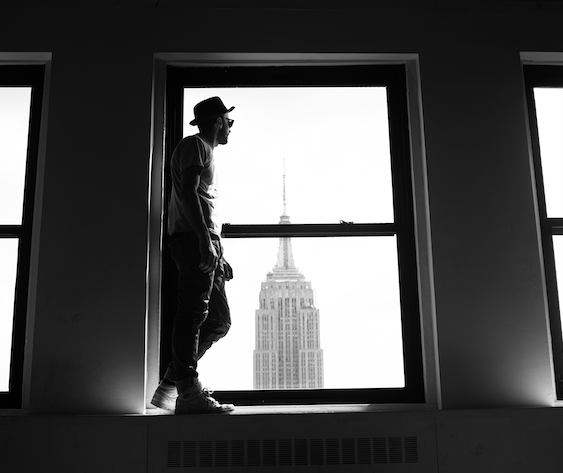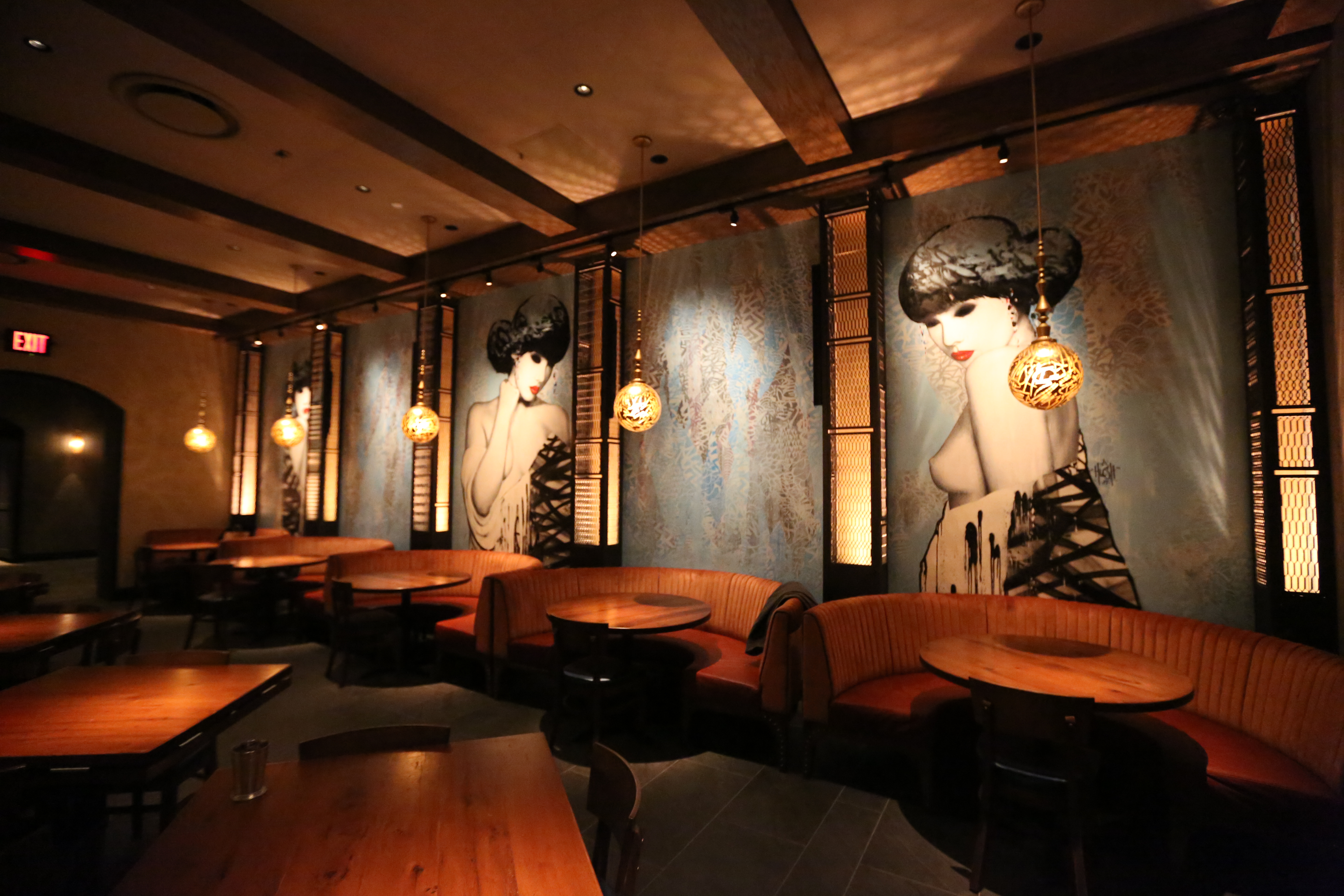
“I wanted the work to be relevant to the [street art] scene,” explained champion street artist Hush as we sat to discuss his curatorial debut at New York’s new “it” spot, restaurant lounge Vandal. He was commissioned with the task of curating an 11,900sqft space with the Rockwell Group, the designers of TAO Downtown—gulp! Hush being the cool character that he is, however, took it in stride and saw this as his opportune moment to showcase “the scene’s” originals and emerging street artists through a series of murals beyond the obvious.
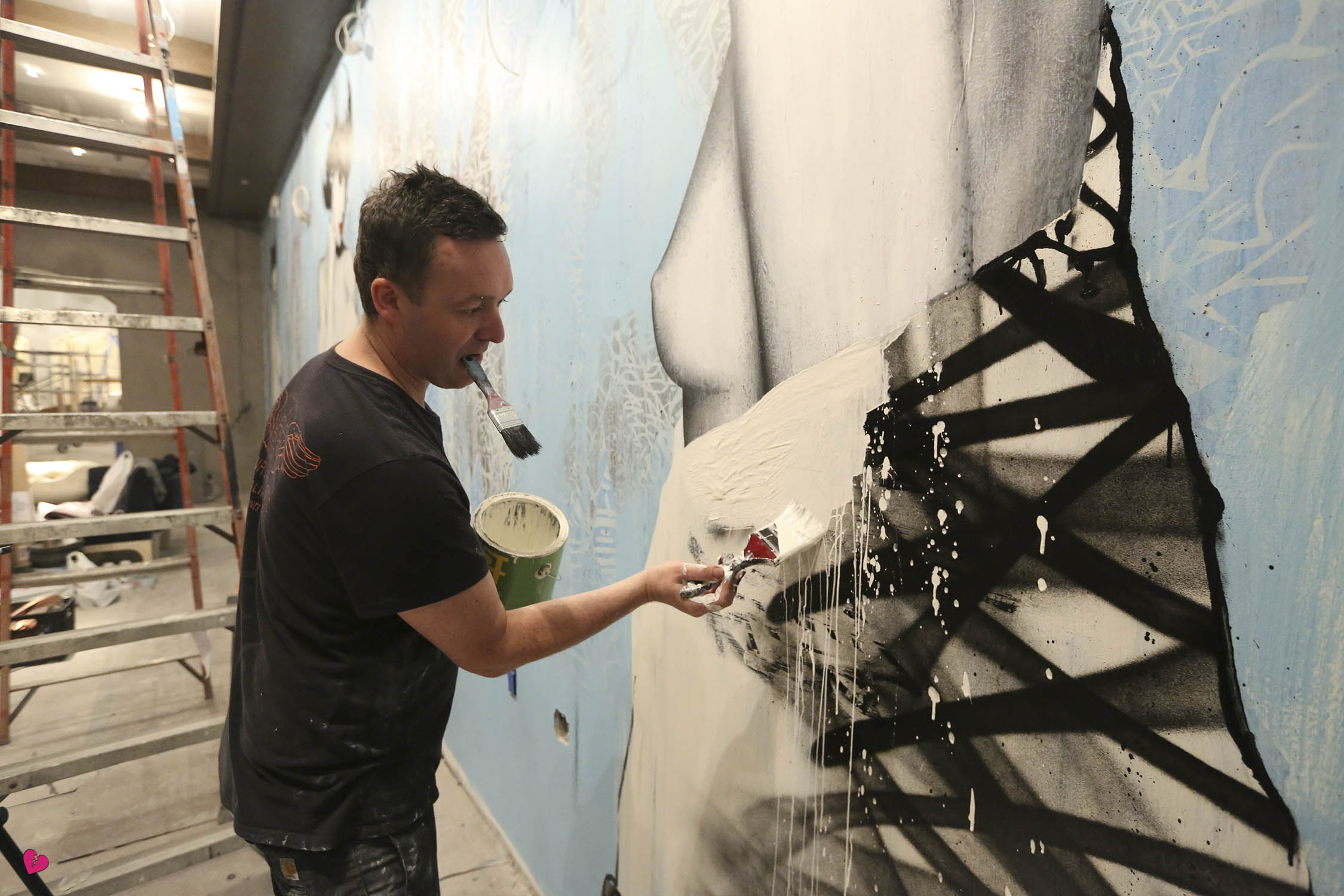
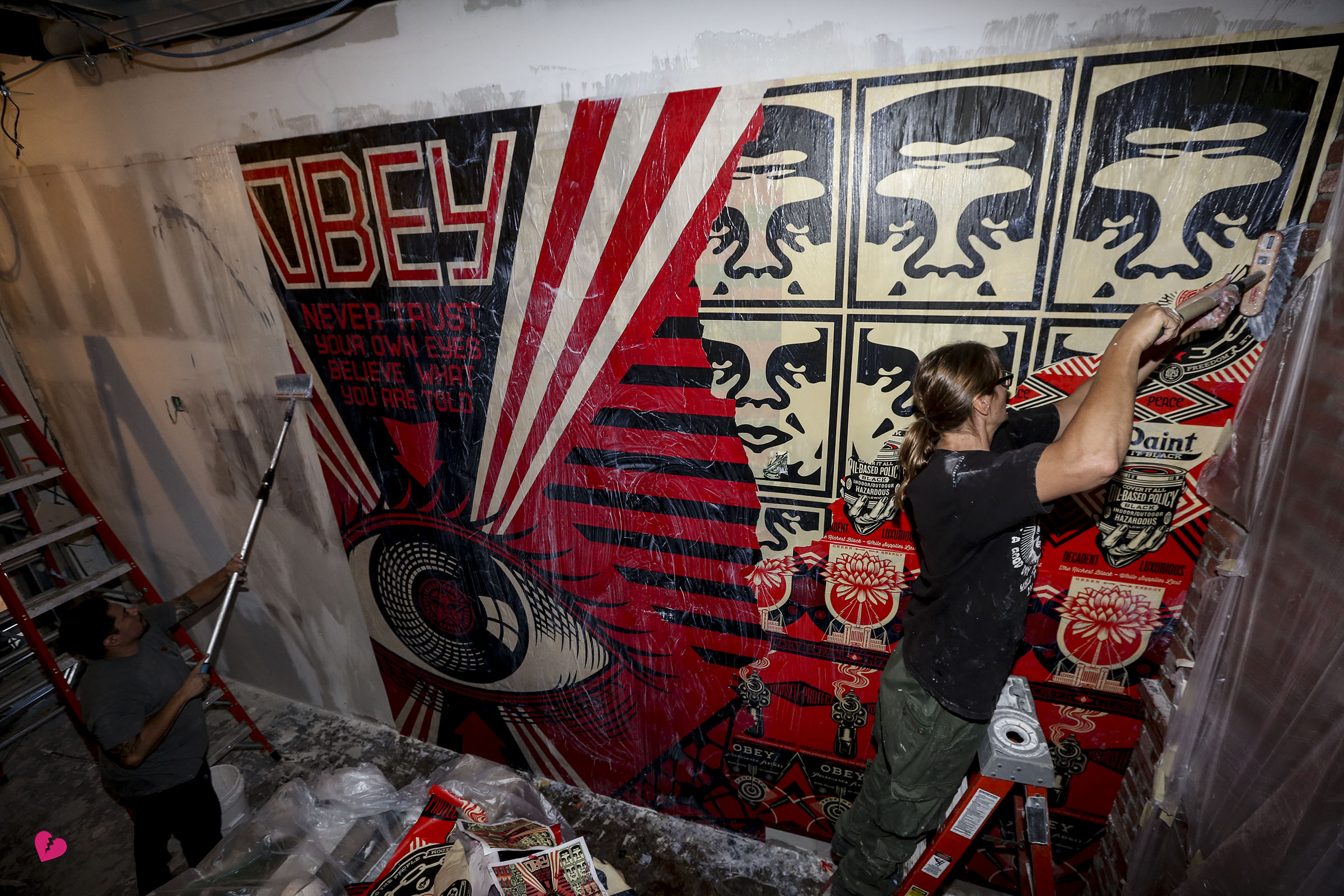
Hush was given free rein of the space. In his quest to curate a platform that truly represented street art, he recognized it was crucial to include artists who were active ambassadors and heavily involved in the scene. In response to this, he acquired pieces by street art giants: JR, FAILE, Banksy and Shepard Fairey, to name a few. Banksy notably serves as the gateway, referencing Neo-Expressionist Jean-Michel Basquiat. The idea that the artists could essentially take over the entire space as they saw fit, free from any restrictions, was in keeping with the roots of street art itself.
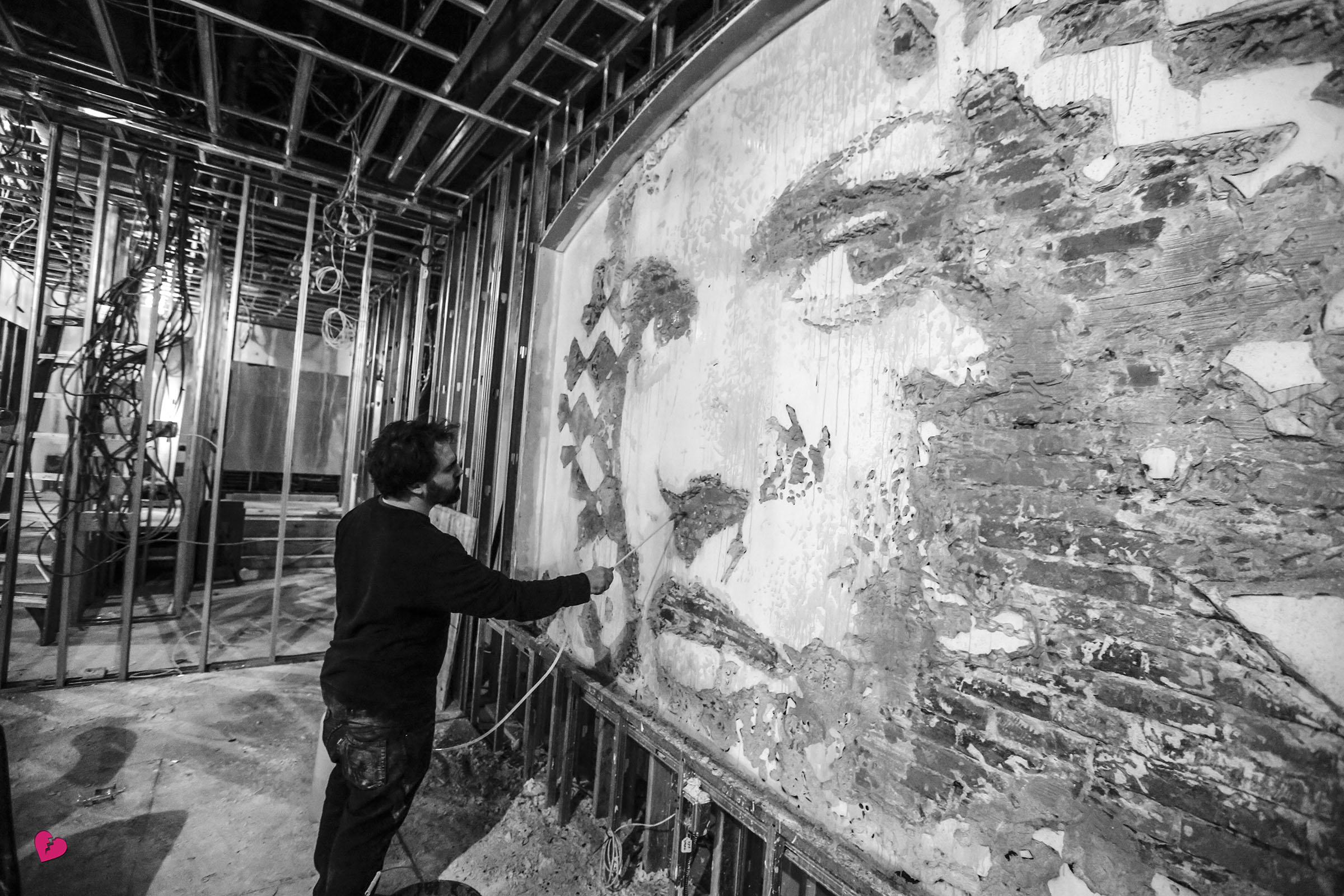

From curating Vhils’ ever-inspiring explosive etchings, Tristan Eaton’s flash freehand spray painting and Eelus’ ethereal stencils to descending into the abyss with Apexer’s abstract hand style, echoing Keith Haring and noting the Billy Joel classic “New York State of Mind,” Hush exceeded all expectations. He presents street art as bold, contemporary, delicate and sophisticated, words which aren’t often associated with this genre. “I put it into a context where it can be seen as beautiful, almost feminine.” His role as curator came naturally. He didn’t see himself as that and instead focused on highlighting the range of different techniques involved in street artistry. In his cool Newcastle brogue, Hush described how he used his knowledge of past installations to help shape this space. For him it was all about creating an experience and realizing a vision, which, in years to come, will be understood as the history of an aesthetic.
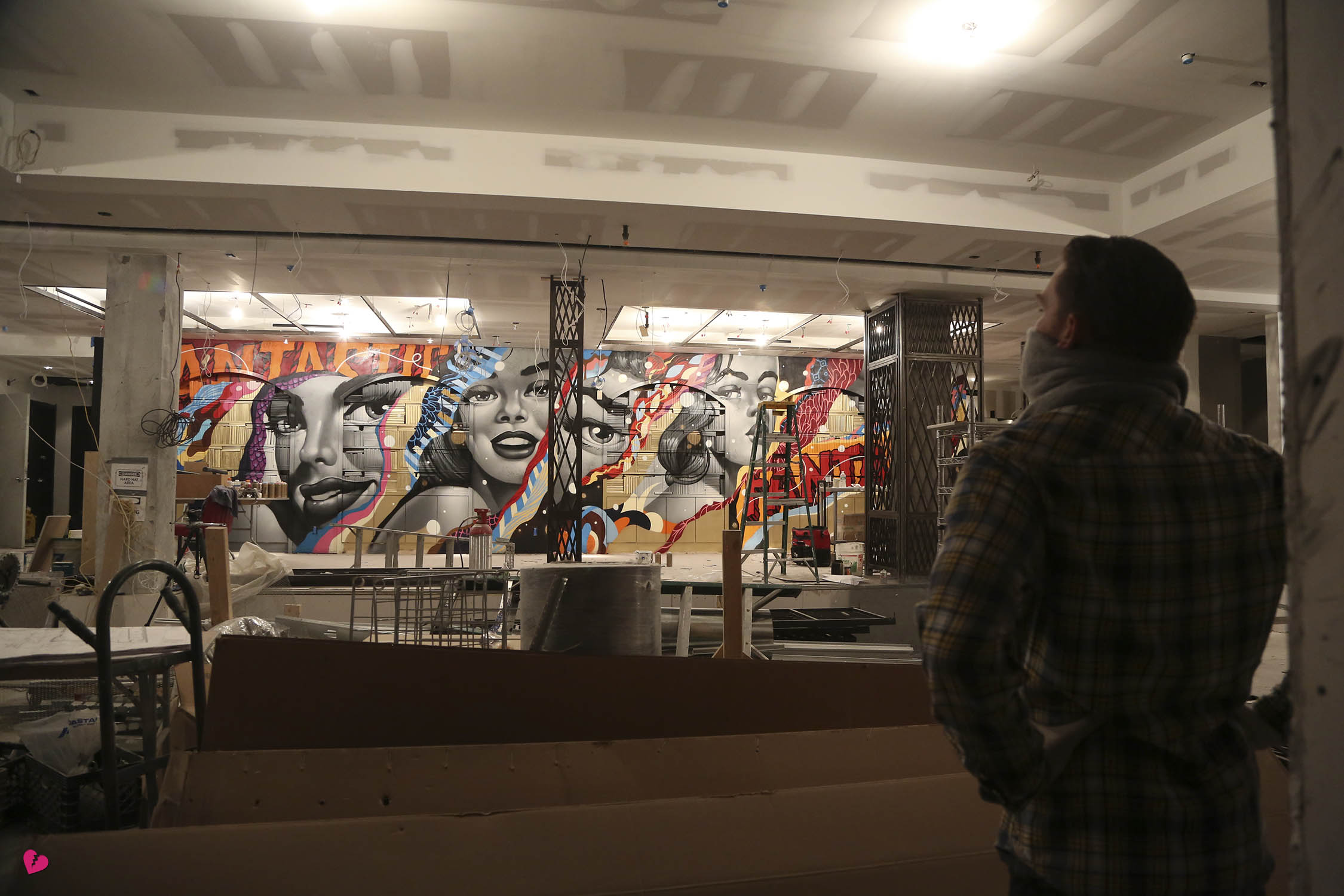
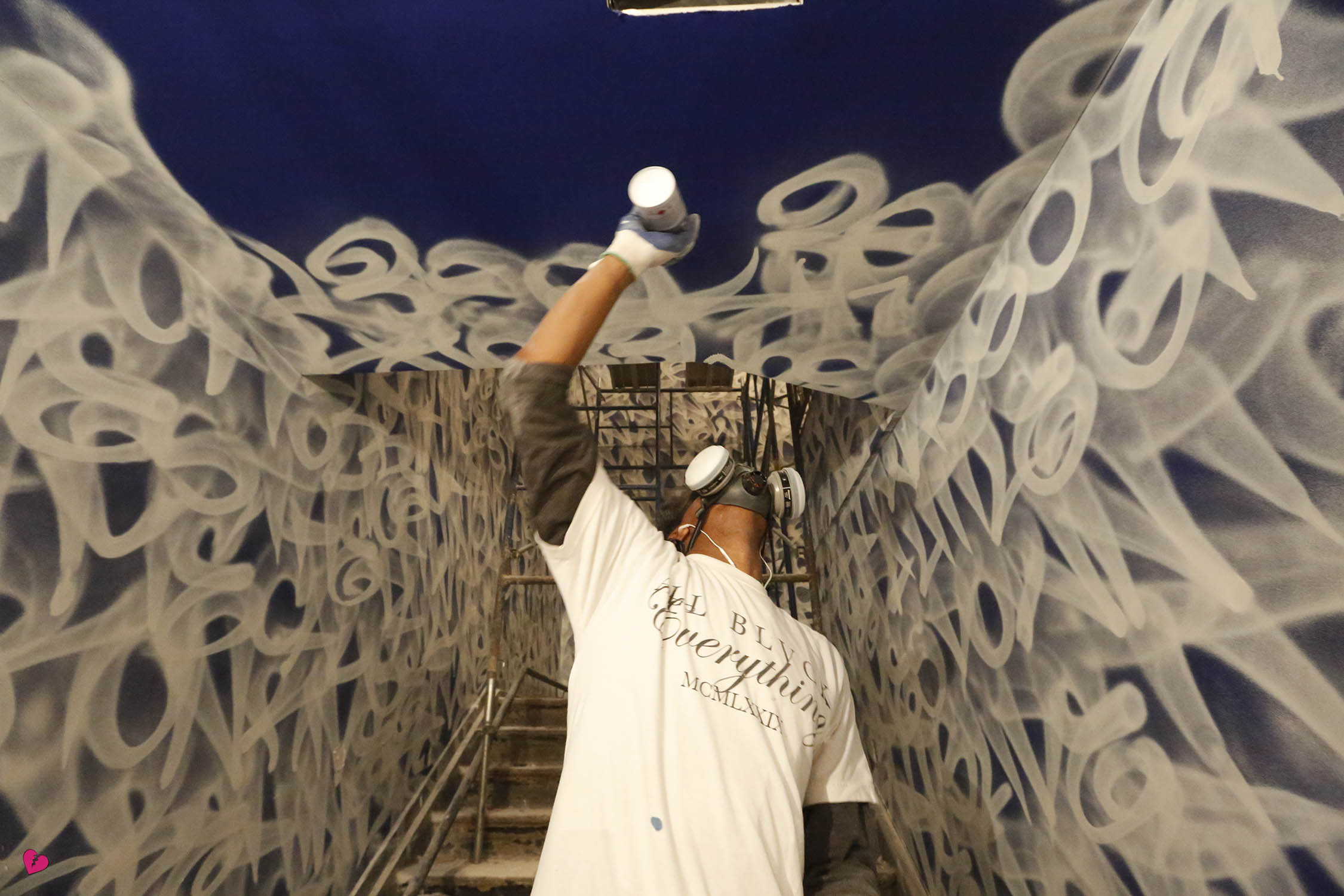
It’s fair to assume that people are interested in something other than conceptual work, reaffirming the fact that painting is back—one wants to see something that is relatable. As Hush puts it,
“It’s all about this movement, creating hysteria. Slowly but surely you see these artists like José Parlá and JR who have been accepted by the top contemporary galleries.”
It is commonly misunderstood that street artists are the uneducated “hood rats” of the industry. This stigma is far from true—the majority have cut their teeth at some of the world’s top art schools. As with the galleries, the rest of the art scene will soon follow suit from writers, bloggers and editors. This generation is essentially pioneering the movement, hailing from different backgrounds of acceptance.
“Everything’s an experience these days. A lot of people are afraid to go into the whitewall establishments, and they’re definitely afraid to have a comment. Whereas you walk into these spaces and they can feel the energy.” Indeed you can. Hush’s work in particular (situated in the main dining lounge) has contemporary elements and references art history through his recognizable figurative female forms. Influenced by street art, he uses graffiti, collage, tagging, spray paint, paint and screen printing to create these fundamentally fresh visuals.
Hush has excelled in creating an enchanting yet insightful artscape, which is sure to be a main attraction for years to come—backing his declaration, “They can’t fight this movement.” Why would you?

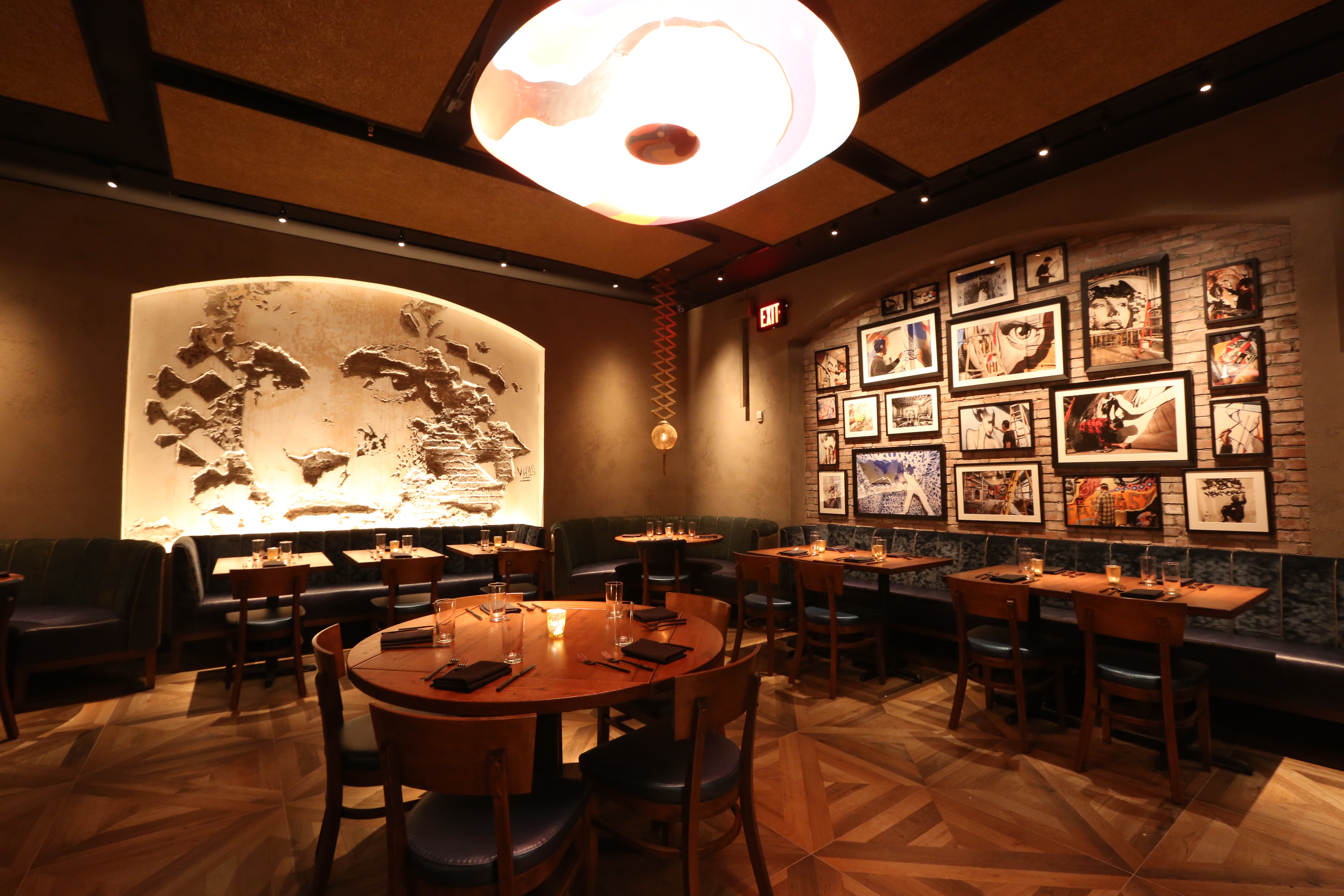
All images courtesy of Craig Anthony Giambrone.
Like this article? Check out our conversation with JR and other exclusive artist interviews.






